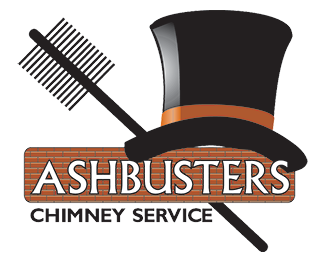Chimney fires kill! When you’re sitting in front of a cozy fire, the last thing you’re likely to be thinking about is the condition of your chimney. However, if you don’t give it some thought before you light that next fire, your enjoyment may be very short-lived. Dirty chimneys can cause chimney fires, which can damage structures, destroy homes and injure or kill people.

Ashbusters Charleston conducts chimney evaluations according to guidelines set forth by the National Fire Prevention Association (NFPA).
These fires can burn explosively, causing flames and/or dense smoke to shoot from the top of the chimney. However, slow-burning chimney fires don’t get enough air or have enough fuel to be as dramatic or visible, but the temperatures they reach are very high and can cause just as much damage to your chimney’s structure.
How Does Creosote Form?
Your fireplace was designed to safely contain and expel the byproducts of your wood-fueled fire’s combustion process. As these byproducts exit the fireplace and flow up into the relatively cooler chimney, condensation occurs. When the condensation dries, it gradually hardens, taking the following forms: Stage 1 creosote (velvety soot), Stage 2 creosote (porous and crunchy), and Stage 3 creosote (shiny, rock-hard glaze).
The Problems with Creosote
The buildup of Stage 3 creosote is denser and harder than brick, and firmly adheres itself to your chimney’s inside walls, becoming a second skin. Chimney brushes can’t sweep it out and more serious abrasives that would be strong enough to break the glaze would, more than likely, damage the chimney itself.
Fresh layers of creosote can build up rapidly, accumulating quickly when previously deposited layers of creosote don’t dry completely. These newly formed layers insulate the older layers from the heat of the rising wood exhaust, which eventually dries them and creates a heavy buildup of sticky creosote that eventually solidifies completely; this results in a rock-solid layer of creosote is often referred to as glaze.
The improper burning and/or venting of airtight wood-fire byproducts cause the conditions for excessive creosote accumulation to occur. To be more specific, Stage 3 creosote deposits will form when there is a draft problem, when green or wet wood is burned, or when the draft control is set too low, which causes your fire to smolder.
Stage 3 creosote removal is crucial, as it helps reduce the likelihood of a chimney fire. During your appointment, the CSIA-certified professionals at Ashbusters Charleston will come out to assess the situation and will prescribe the proper course of action to cure your chimney’s creosote woes. We will also clue you in on the probable cause of the buildup in the first place and can suggest what you can do to prevent it.
